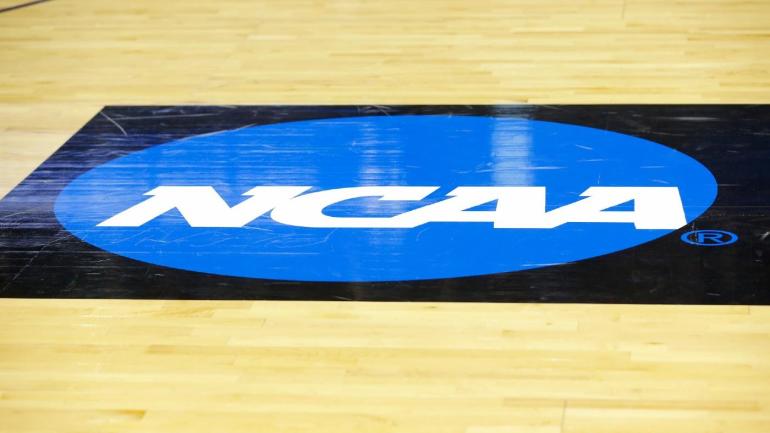
The NCAA quietly confirmed this week that the NCAA Tournament's entire $613 million revenue distribution would be paid to association members as long as all 67 games of the event are completed. That's a significant revelation given the ongoing impact COVID-19 is having on the NCAA's biggest annual event.
Canceling the 2020 NCAA Tournament unleashed a financial downturn in college athletics still being felt today -- a financial hit some contend didn't have to be so severe.
Insurance taken out to cover cancellation of the tournament didn't come close to accounting for the $800 million in revenue produced by the event. Nor was it was meant to. Insurance covered only $270 million. Only $225 million of an anticipated $600 million marked for the membership was then distributed. That's approximately 40 cents on the dollar in a business where only 20 or so athletic departments at the top actually turn a profit.
"What [the NCAA] received is the largest event cancellation payout in the history of event cancellation," said John Beam, the broker of the policy held by the NCAA.
The NCAA contends that its policy represents an industry standard and is considered best practice. Others disagree. The current three-year agreement ends after this year's tournament.
"I don't know who believes that insuring a quarter of your value of your event is best practice," said Richard Giller, a partner specializing in insurance recovery for Pillsbury Winthrop Shaw Pittman, a global law firm based in the United States, London and Asia.
Industry sources indicated to CBS Sports that premiums that would fully insure the NCAA Tournament would be too cost-prohibitive to make sense for the association. "That's what risk mitigation is all about," said one insurance expert. "What's worth trying to recover?"
Insurance industry sources estimated it would cost the NCAA $8,000 to $9,000 per $1 million of coverage. Given the 2020 coverage of $270 million, that would put the premium cost between $2.16 million and $2.43 million.
"We have a big list of clients," Beam said. "No one is more thoughtful, more intentional in evaluating risk than the NCAA. You have to weigh that against probability [of event cancellation]."
Kathleen McNeely, the NCAA's chief financial officer, explained it this way in a release last May: "We had a plan. We've implemented the plan. And the plan is working."
The NCAA had already determined the likelihood of total cancellation prior to 2020 was "extremely low."
"What in the past 100 years, other than a war, has caused an event that large to be canceled?" Beam asked.
The NCAA ran into it.
It is imperative things get back to normal beginning in March. A second straight disruption of the NCAA Tournament could further erode the association's standing. As it fights lawsuits continuing to defend an outdated collegiate model, critics are already wondering what the NCAA is beyond the organization that stages March Madness.
The Knight Commission, an NCAA watchdog, last year recommended major-college football and the College Football Playoff separate from the association. Last summer, it found that a majority of survey respondents at Power Five schools were in favor of forming their own division with the NCAA. In that survey, the commission said it found "wide dissatisfaction with how Division-I college sports are run." (Editor's note: Only a fraction of those surveyed responded to the Knight Commission's survey.)
The NCAA Tournament remains the lifeblood of the association's 1,268 members. It is the primary source of the NCAA's income. That $800 million in annual tournament revenue is 72% of the NCAA's $1.1 billion annual total. Last year, $600 million of that $800 million was scheduled to flow back to the schools.
That revenue fills athletic department coffers, provides operating capital for conference offices and provides funds directly to athletes in need.
It might be the NCAA at its best.
That's why it's so important 68 teams make to Indianapolis healthy and the tournament games are played as scheduled. Television rights are the financial underpinning of modern college sports. In 2016, the NCAA's contract with CBS and Turner was extended through 2032. That deal averages $1 billion per year.
An NCAA spokesman told CBS Sports this week that "the NCAA will allocate a full distribution of $613 million" to its members "if the men's basketball tournament is completed in full." That despite a significant shortfall in ticket revenue. The NCAA recently announced there will be 25% capacity in the tournament venues. Ticket revenue is covered by the NCAA's policy.
Meanwhile, the past year's financial downturn that began with the tournament's cancellation is still an issue. Reacting to COVID-19, dozens of schools sliced sports. Stanford shocked the college world by eliminating 11 sports last July. Sports Illustrated reported 86 Division I minor sports teams were eliminated in the 2020-21 academic year. That's the most since 1997-98.
Employee furloughs and layoffs became common. The austerity reached the NCAA in September when the association announced significant cutbacks. Banks and financial institutions descended on athletic directors pitching loans to allow them to balance budgets. Those banks know the loans are good investments because, if an athletic department can't make good on it, a school will.
The loss of NCAA Tournament revenue may account for only 10% of the overall budget for a major athletic department, one source estimated. However, the further down the athletic food chain, that tournament revenue becomes a larger percentage. Group of Five and mid-major programs don't have giant TV revenue streams to mitigate some of those losses.
"When I was at Northern Iowa, the only revenue stream the conference got besides its [basketball] tournament is the NCAA monies," said Tulane athletic director Troy Dannen, who led the mid-major Panthers from 2008-15.
The NCAA Student Assistance Fund -- benefitting athletes needing a new computer or clothes for a job interview -- "is gone this year," according to an AD at one Group of Five school.
Let's not forget those mid-majors being most adversely affected by the 2020 cancellation have infused the NCAA Tournament with some of its most dramatic Cinderella moments over the years. The mere reaction to the tournament's cancellation created mounds of new debt for those athletic departments. Deficits were exacerbated by truncated football schedules and a decline football ticket revenue.
The NCAA cut its budget by $130 million. There is another projected $66 million in cuts for fiscal 2021.
Wimbledon last year provided a blueprint on how to weather the pandemic. It collected $141 million in insurance after the tennis tournament was canceled last April. Those in charge foresaw such an occurrence. Wimbledon paid $2 million annually for a cancellation policy each of the last 17 years. The NCAA will have to get a new policy after its current deal expires following April's Final Four amid the still-lingering threat of COVID-19.
During a multi-year agreement, an insurance company cannot alter the premiums or the payouts. But in searching for a policy on the open market, the NCAA will face a new challenges.
Beam is a sports and entertainment practice leader for Willis Towers Watson, a global risk management firm that traces its roots back to 1828. It has had an agreement with the NCAA since 2006. Beam's company currently faces $2 billion in claims stemming from 140 altered events. That's part of an overall impact of $15 billion to $18 billion in the entertainment industry, he said.
Going to market for a new big-event cancellation policy in general "will be challenging," Beam said. "It will be a significant price increase."
To lessen the liability of communicable disease, Giller said insurance companies may choose to no longer write such polices until 60-90 days before an event. Some companies may refuse to write communicable disease riders altogether. A communicable disease rider on a policy usually costs 12% to 18% more than a basic cancellation policy. The NCAA has that in its current policy.
Following 9/11, the NCAA developed a strategic plan to protect the tournament through insurance and cash reserves. Those reserves were called "quasi-endowment funds." One insurance source said it would be folly to insure the NCAA Tournament for its full value, which approaches $1 billion. The entire assets of Lloyd's in 2019 were equivalent to $74 billion in U.S. dollars. The NCAA's current policy was "prudent," chief operating officer Donald Remy told the Washington Post last year.
"I can't even say that membership would have had an appetite for what that premium would have cost us annually, for additional insurance," McNeely said last year.
"A lot of us have game-loss insurance, but none of us write that insurance for every dollar that would get lost if you lost a game," Dannen said.
In that Post report, it was detailed how funds that might have better covered a cancellation were moved for a variety of reasons. In 2017, the NCAA Board of Governors decided on a $200 million one-time distribution to Division I schools. Also that year, the NCAA decided to use $210 million to settle a class-action suit. The NCAA defended those decisions.
The NCAA reported a $600 million decline in revenue for the 2020 fiscal year in an audit released in January. That's a 50% decrease from the previous fiscal year. There was a gross loss of more $800 million in TV rights and ticket sales in the fiscal year ending Aug. 31. The association reported a net loss of $56 million in the fiscal year.
All across the country, financial downturn continues. The completion of the NCAA Tournament can't get here fast enough.

















